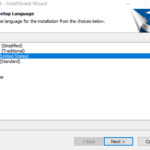The following are the top five architectural software programs: – A person may seek architecturally and plan designing software for a variety of reasons. You might be an architecture student who wants to improve your talents by practicing digitally, which saves both time and money. You could be a layperson attempting to draw a floor plan for a new home or merely interested in juxtaposing room placements and walls to get a sense of how they would seem if built.
Architecture software may be quite valuable in eliminating regretful situations later when a home has been built incorrectly, which is both costly and a tremendous burden for the people who live there. It is less likely that there will be faults in the building if you are clear about how you want your house to be built, and this can only be ensured by using appropriate architectural software.
For whatever function you require architecture software, the internet has a large selection of options, many of which are free, which is the best option for all of us. This post will offer the top 5 free architectural software, so if you’re stuck, just pick one of them and download it from the internet.
5. DesignWorkshop Lite
This free software allows you to create 3D models of your home and floor plans, as well as any landscape you want to see. The user-friendly interface includes functions such as elevation, projection, extending, zooming in and out, naming items and materials, and a visual walkthrough experience. It is possible to add text messages, and the user is free to draw with a virtual pencil. Cut-copy options, as well as shapes like circles and rectangles, are also accessible. Background pictures can be imported in JPG, GIF, PICT, and a few more common formats.
Although you can try to make a floor design with this software, it is not optimal. Users have expressed dissatisfaction with the absence of complex design tools and excessive mouse control. If you only want to view 3D photos of a specific location and aren’t interested in complex architecture tools, this software is ideal. The user interface is straightforward and intuitive, making it great for those who are new to online editing and design.
4. My Virtual Home
This is an excellent program for those who wish to visualize and plan the layout and structure of their home, as it provides an actual rendering of the effect that various types of buildings, such as walls, doors, and bathrooms, will have on the layout and structure of the home. This software creates highly creative and interactive models of objects, surfaces, and materials, as well as determining how the lighting will seem in various areas of the layout. This software is ideal for those who do not want to hire an architect or simply want to obtain an idea of what they want their home to look like so they can direct the architect accordingly. It’s also free, and it provides information about material and service suppliers, such as how to contact them, rates charged, and so on, so you don’t have to go looking for a supplier after you’ve chosen and loved a material. Not only are building goods available, but also home decoration and gardening supplies.
However, one flaw in this seemingly ideal program is that it was designed for a primarily Australian clientele. So, unless you plan on staying in Australia, the prices of materials and suppliers supplied will be of no use to you. This software is fantastic for designing, but it is not meant to adapt and cater to a global audience, which is a major disadvantage for us.
3. AutoCAD Architecture
This is aimed mostly at aspiring architects, as well as established architects. This software, which is filled with advanced tools that every architecture student becomes familiar with, provides precision in detail, easy drafting, and seamless design production. There are two versions of AutoCAD Architecture: a free trial and a premium edition. This software is ranked third on this list because it provides professional architectural tools, and while the free version is simply a trial, any architect or prospective architect who uses it is sure to fall in love with it, making the paid version well worth the one-time investment. This software is unusual in that the drawings you generate will represent real-life behavior—smooth material will appear smooth, rougher material will appear grainy, and so on. It is fully compatible with Windows (both 32 bit and 64 bit). This is especially exciting for architects who want to see their designs come to life. Unfortunately, if you don’t want to pay the low cost of the full version of this software, this isn’t the one for you.
2. SketchUp
After Google renamed SketchUp, the software is swiftly gaining popularity among users. SketchUp is available in a variety of versions, including SketchUp Make and SketchUp Pro, and customers can select the version that best suits their needs. SketchUp has received a lot of criticism for its flaws, such as the fact that it can’t recognize shapes that aren’t straight cut like rectangles or circles but have their own shape; that performance concerns slow down the software’s speed and functionality; and other issues.
But it has a lot of add-ons and a forum where you can get free and timely help, not to mention some of the really cool features like how easy it is to learn, how it creates clear 3D images, how it allows you to control flooring, woodworking, and how it allows you to create additional fixtures like a garage, shed, deck, and so on. Each object, surface, and material has its own distinct texture, which is a big plus. The lack of accuracy is a problem, but with the creators working hard to address it, SketchUp should become even more popular in the near future. Its most appealing feature is still its user-friendly interface.
1. Revit Architecture
This one is free for all students and education-related professionals, and Revit also provides all other users with a free three-year license to use the software, which is fantastic. This software is perfect for architecture students because it is free to use. This software is highly structured and professional, and it will preserve any changes you make as soon as you make them, and it will continue to adjust the landscape/plan you’re working on to provide you with the best possible experience. Accuracy is a primary benefit of this software; it ensures and offers designs that are clean and error-free. Users can design any structure and view it in 3D, sketch quickly, and supervise the construction process from start to finish, including demolition of areas they don’t want.
Revit is not for new users or laypeople designing their homes, despite its well-defined and clear-cut approach. Only someone with experience in architectural study and design can use Revit to create buildings, fixtures, and extra detailing.
ArchiCAD is a good architecture program that gives high-quality design and efficient performance if you don’t mind paying for it. Despite the fact that ArchiCAD, like AutoCAD, offers a free trial, users have voted that the paid full version is the only one worth attempting or using; the trial does not give many capabilities to try.
Many users are hesitant to pay for software they aren’t sure they’ll enjoy right away, so they rely on a trial version to help them decide. However, if the trial version does not reflect the features promised in the paid version, customers are less likely to use it.
DreamPlan Home Design is another free program that came close to making our list. It’s similar to SketchUp in terms of simplicity and basic rendering, but DreamPlan has a far smaller and less complex choice of items, materials, and tools, whereas SketchUp has many more creative alternatives. SketchUp is also quite easy to use, which provides it an advantage over DreamPlan.
Many people use MicroStation as an architectural program since it has a reliable interface. While this seems good, users have complained that the software lags a lot and causes computer performance concerns. We don’t recommend software that slows regularly and disrupts workflow; thus, we don’t recommend MicroStation.
It can be difficult to find the right software among all of the architectural software options available on the internet, but the most significant elements to consider are cost, dependability, performance, and fit to one’s requirements. While it may be appealing to not have to pay for software, premium software is sometimes superior in terms of functionality and service. However, if you don’t want to spend any money, you can use any of the software on the list above and accept whatever problems it has as long as they are tolerable.
A word of caution:
Whatever program you choose to download, make sure it’s from a trustworthy website rather than a dodgy, unaffiliated site that appears even remotely like it could contain malware. Several unfamiliar websites may appear to be harmless, but a single click on a download link might infect your computer with malware. Trustworthy websites include CNET Download, Softpedia, and official websites.






